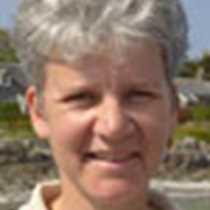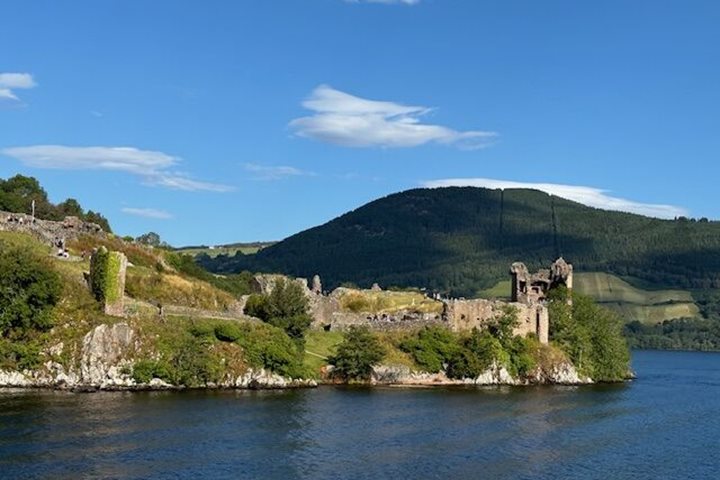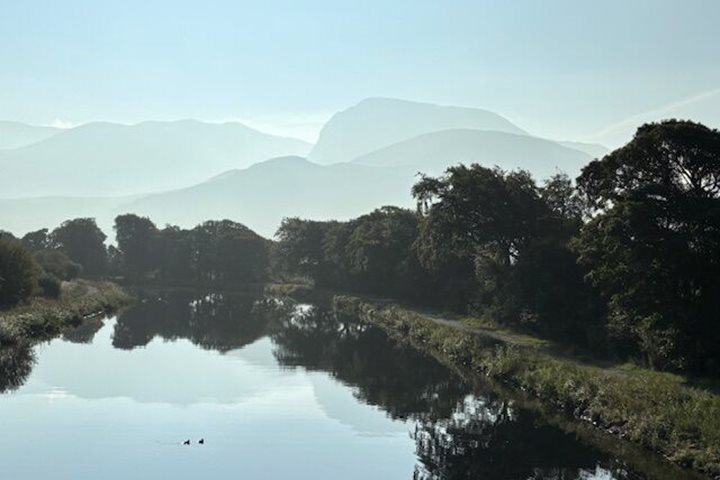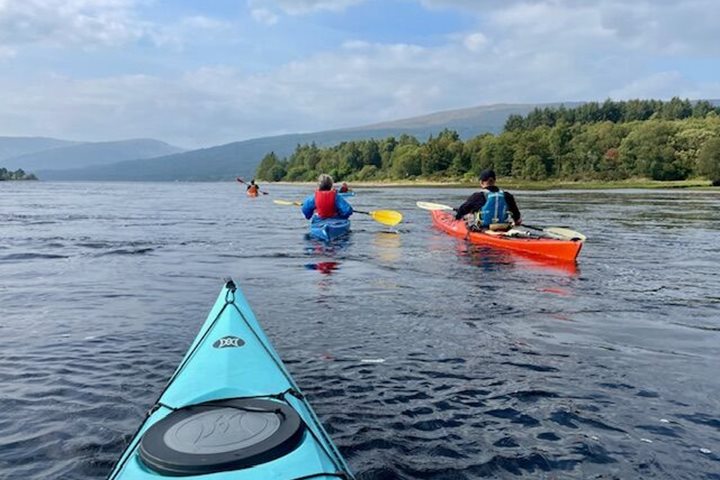After breakfast we set off through the sea lock at Corpach, out to sea and on to Loch Linnhe. Our journey took us past the big cloud called Ben Nevis, Britain’s highest mountain, and also past Fort William. This town is named after the fort that was built here in the 18th century to control this part of the Great Glen. Nowadays it’s a busy place as people of the wider surrounding area come here to do their grocery shopping and it’s also a tourist centre due to its proximity to Ben Nevis.
Once we passed the Corran Narrows with Corran Lighthouse (the light came on in 1860; the engineers were David and Thomas Stevenson), Steve gave us a fascinating talk on Celtic Christianity in preparation for our visit to Iona tomorrow.
Our sail then took us past Castle Stalker (belonged to the Stewarts of Appin, later the Campbells; after centuries of being a ruin it was restored in the 1960s) and the island of Lismore to Oban.
This is a bustling town with a population of about 8,000, and again a place where people from far afield come to do their shopping. Oban is also very busy with visitors and has been since the 1900s, due to its lovely position in a small bay (Oban means small bay), sheltered by the island of Kerrera. Adding to the feel are the Caledonian MacBrayne ferries that come and go, heading for the islands of Mull, Lismore, Barra, Coll, Tiree and Colonsay.
The afternoon in Oban was spent with shopping and/or visiting the local museum as well as a visit to Oban Distillery. Once we had a fill of those activities some of us joined Stewart and Konia for a walk to Oban’s most prominent building, McCaig’s Folly. John Stewart McCaig was a banker who decided to build a copy of the Roman Coliseum to commemorate himself and his family at the turn of the 19th and 20th centuries. Due to McCaig’s death this project was never finished, but he got as far as building the outer walls. Its many windows make for nice frames for photographs looking out to the isles of Mull, Lismore and Kerrera as well as the Morvern Peninsula on the mainland.
After dinner we enjoyed a real treat on board Lord of the Glens—Peat Reek, a local band, came to play some traditional Scottish music. With their large repertoire of different types of Scottish music as well as several instruments, a good time was had by all.
Many of us went to our beds looking forward to tomorrow, as the Isle of Iona is a certain highlight on our trip.







